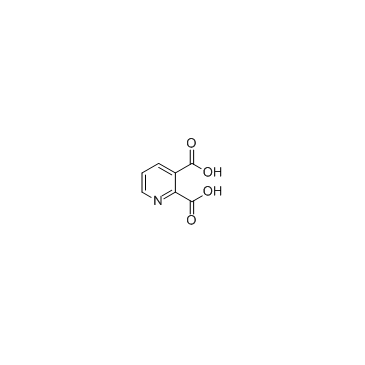Effects of translocator protein (18 kDa) ligands on microglial activation and neuronal death in the quinolinic-acid-injected rat striatum.
Katherine R Leaver, Aaron Reynolds, Sylvie Bodard, Denis Guilloteau, Sylvie Chalon, Michael Kassiou
Index: ACS Chem. Neurosci. 3(2) , 114-9, (2012)
Full Text: HTML
Abstract
There is evidence that excitotoxicity and prolonged microglial activation are involved in neuronal death in neurodegenerative disorders. Activated microglia express various molecules, including the translocator protein 18 kDa (TSPO; formerly known as the peripheral benzodiazepine receptor) on the outer mitochondrial membrane. The TSPO is a novel target for neuroprotective treatments which aim to reduce microglial activation. The effect of PK 11195 and three other TSPO ligands on the level of microglial activation and neuronal survival was evaluated in a quinolinic acid (QUIN) rat model of excitotoxic neurodegeneration. All three ligands were neuroprotective at a level comparable to PK 11195. All of the ligands decreased microglial activation following the injection of QUIN but had no effect on astrogliosis. Interestingly, we also observed neuroprotective effects from the vehicle, dimethyl sulfoxide (DMSO).
Related Compounds
| Structure | Name/CAS No. | Molecular Formula | Articles |
|---|---|---|---|
 |
Quinolinic acid
CAS:89-00-9 |
C7H5NO4 |
|
The CB₁ cannabinoid receptor signals striatal neuroprotectio...
2015-10-01 [Cell Death Differ. 22 , 1618-29, (2015)] |
|
Activation of the kynurenine pathway and increased productio...
2015-01-01 [J. Neuroinflammation 12 , 110, (2015)] |
|
Age-related reference values for urinary organic acids in a ...
1994-06-01 [Clin. Chem. 40(6) , 862-6, (1994)] |
|
Chemical genetics reveals a complex functional ground state ...
2007-05-01 [Nat. Chem. Biol. 3(5) , 268-273, (2007)] |
|
Metabolomic profiles delineate potential role for sarcosine ...
2009-02-12 [Nature 457(7231) , 910-4, (2009)] |